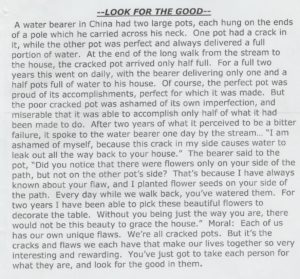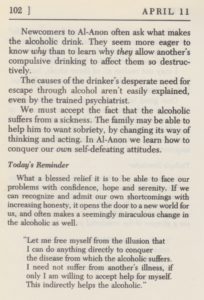Memoir Excerpt:
“Most people have rules that they try to live by: a certain moral code that they may have picked up from their parents or others as they grew up…and the best piece of wisdom, I think, is the Serenity Prayer:
‘God, grant me the serenity to accept the things I cannot change, courage to change the things I can, and wisdom to know the difference.’
There are so many things in my life over which I have no control: the weather, road rage, barking dogs. Really, the capriciousness of events that surround us is astounding and is perhaps the reason why many people, myself included, need a lot of daily structure to feel grounded and secure. A sound mind, good health and a sense of wellbeing only add to that state. But when illness strikes, all sense of security and control flies out the proverbial window.
My daughter falling ill with drug addiction threw my life into turmoil, and I spent years flailing around like a decapitated chicken trying to make sense of things and gain a sense of control. My life was becoming very messy because I kept trying to influence the course of an illness that had nothing to do with me. Turning my attention to other areas where I could have had an impact would have been more constructive. I know I must continue to accept the unpleasantness as hard as it is because if I don’t—if I fight tooth and nail to get my way—I’ll just make myself crazy. I’ve kept trying to help Angie because I care so much, but it’s a losing battle if the change is beyond my reach. Our addicts may indeed find recovery—and we all pray that they do—but if they do, it will be through their own efforts and commitment, not ours.
The big sticking point, however, for anyone who loves an addict is where and when and why and howinthenameofallthat’sholy can I ever let go? It’s a process we all go through in different ways and at a different pace. There is no right or wrong way. The Twelve Steps have provided me with a useful program for living and given me the guidance I’ve needed to navigate through the difficulties in my life.”

